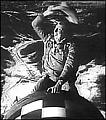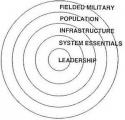Frustrated by poor federal cooperation, U.S. states and cities are building their own network of intelligence centers led by police to help detect and disrupt terrorist plots.
The new "fusion centers" are now operating in 37 states, including Virginia and Maryland, and another covers the Washington area, according to the Department of Homeland Security. The centers, which have received $380 million in federal support since the 2001 terrorist attacks, pool and analyze information from local, state and federal law enforcement officials.
The emerging "network of networks" marks a new era of opportunity for law enforcement, according to U.S. officials and homeland security experts. Police are hungry for federal intelligence in an age of homegrown terrorism and more sophisticated crime. For their part, federal law enforcement officials could benefit from a potential army of tipsters -- the 700,000 local and state police officers across the country, as well as private security guards and others being courted by the centers.
But the emerging model of "intelligence-led policing" faces risks on all sides. The centers are popping up with little federal leadership and training, raising fears of overzealousness such as that associated with police "red squads" that spied on civil rights and peace activists decades ago. The centers also face practical obstacles that could limit their effectiveness, including a shortage of money, skilled analysts, and proven relationships with the FBI and Homeland Security.
Still, the centers are emerging as a key element in a sometimes chaotic new domestic intelligence infrastructure, which also includes homeland security units in local police forces and 103 FBI-led terrorism task forces, triple the number that existed before the Sept. 11 attacks.
Fusion centers are becoming "part of the landscape for local government," said the incoming D.C. police chief, Cathy Lanier. But she warned that police are navigating a new patchwork of state and federal privacy laws that govern the sharing, collection and storage of information. "We're in a very precarious position right now," she said. "If we lose community support, that is going to be a big deal for local law enforcement."














Bookmarks